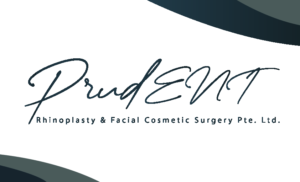Chemical Peels
CHEMICAL PEELS Chemical peels are a type of skin treatment used in cosmetic and dermatological procedures to improve and smooth the texture of the skin. They involve the application of a chemical solution to the skin, which causes the top layers to exfoliate and eventually peel off. This process reveals newer, more youthful skin beneath. Chemical peels can be used to treat various skin issues, including wrinkles, discoloured skin, and scars, primarily on the face. They come in different strengths: light, medium, and deep, each targeting different skin concerns and offering varying degrees of effects. SUPERFICIAL PEEL Superficial chemical peels, also known as light chemical peels or lunchtime peels, are the mildest type of chemical peel and can be a great option for those new to skin resurfacing procedures. They typically target the epidermis, the outermost layer of the skin, and are quick to administer, usually with minimal downtime. The concentrations of the acids used are generally lower compared to medium or deep peels. Common ingredients used in superficial peels include: ALPHA-HYDROXY ACIDS (AHAS) Glycolic Acid: 20-50% Lactic Acid: 20-30% BETA-HYDROXY ACIDS (BHAS) Salicylic Acid: 20-30% JESSNER’S PEEL A combination of salicylic acid, lactic acid, and resorcinol, usually at lower concentrations. FRUIT ENZYMES Papain (from papaya) and Bromelain (from pineapple) WHAT DO SUPERFICIAL PEELS TREAT? Superficial peels are well-suited for a range of minor skin issues and cosmetic improvements. Here are some of the conditions and imperfections that superficial peels commonly treat: FINE LINES AND WRINKLES Superficial peels can help reduce the appearance of fine lines, especially those around the eyes and mouth. MILD ACNE AND ACNE SCARS The treatment can help control mild acne and reduce the appearance of minor acne scars by exfoliating the outer layer of skin and unclogging pores. UNEVEN SKIN TONE Superficial peels can help improve uneven skin tone and reduce hyperpigmentation, including age spots and melasma. DULL COMPLEXION These peels can remove dead skin cells, revealing a fresher, more radiant layer of skin beneath. SUN DAMAGE Superficial peels can help treat minor sun damage, although they are not suitable for more severe forms of photodamage. ROUGH OR DRY SKIN The treatment can improve the texture of rough or dry skin by removing the outer layer of dead skin cells. ENLARGED PORES Some people find that a superficial peel can make pores appear smaller by removing the surface layer of skin and unclogging pore openings. MILD ROSACEA In some cases, superficial peels can help improve the appearance of mild rosacea, although it’s essential to consult a healthcare provider for a proper diagnosis and treatment plan. RESULTS Because superficial peels are mild, they usually require little to no downtime. However, multiple sessions are often needed to achieve noticeable results, and maintenance treatments may be necessary to sustain these improvements. PROCEDURE FOR SUPERFICIAL PEELS The procedure for a superficial chemical peel typically follows a series of steps to ensure both the effectiveness and safety of the treatment. Below is a general outline of what you can expect during a superficial chemical peel procedure: PRELIMINARY CONSULTATION Skin Analysis: Dr Sandeep will evaluate your skin type, condition, and medical history to determine if a superficial peel is appropriate for you. Patch Test: A small area of your skin may be tested with the peel solution to check for any adverse reactions. Treatment Plan: Our team will discuss the treatment goals, number of sessions required, and any preparatory skin care regimen. PRE-TREATMENT CARE Skin Preparation: You may be advised to use specific skin care products to prepare your skin for the chemical peel. This often includes retinoid creams or glycolic acid-based products. Avoid Sun Exposure: It is crucial to avoid excessive sun exposure before the treatment to minimize risks. DAY OF PROCEDURE Cleansing: The treatment area will be thoroughly cleansed to remove any makeup, oils, and dirt. Protection: Barrier creams or gels may be applied to protect sensitive areas like the eyes and mouth. Chemical Application: The chemical solution, often containing alpha hydroxy acids (AHAs) like glycolic acid or lactic acid, is applied to the skin. Observation: The solution is left on the skin for a specific time, usually just a few minutes, while closely monitored for signs of irritation. Neutralisation: After the desired time has elapsed, the chemical solution is neutralised with water or a special neutralising solution. Soothing: A calming lotion or gel, often containing ingredients like aloe vera, is applied to soothe the skin. POST-TREATMENT CARE Cooling: Cold compresses may be used to cool down the skin post-procedure. Hydration and Sunscreen: A hydrating lotion and broad-spectrum sunscreen are usually applied. Home Care: You will be given specific instructions for skin care at home, which often includes avoiding sun exposure and using mild cleansers. FOLLOW-UP Check-up: You may be scheduled for a follow-up appointment to evaluate the results and discuss any additional treatments. RECOVERY Minimal downtime, you can usually return to your regular activities immediately. Some redness, tingling, or mild stinging may occur, but this generally subsides within a day. Peeling may occur for 3-7 days, but it’s usually not noticeable enough to require downtime. MAINTENANCE Superficial peels often require multiple sessions for optimal results, and periodic maintenance treatments may be recommended. FREQUENCY Superficial peels can be repeated every 2-6 weeks, depending on your skin’s needs and the recommendation of our team. It’s essential to follow all pre- and post-treatment instructions carefully and consult our team for a treatment tailored to your specific needs. Always ensure you understand the risks, benefits, and aftercare associated with a superficial chemical peel. ADVANTAGES OF SUPERFICIAL PEEL Quick and convenient, often completed within 30-60 minutes. Minimal discomfort and side effects. Suitable for all skin types, though a patch test may be done to rule out any adverse reactions. LIMITATIONS Not effective for deeper wrinkles or more severe skin conditions. MEDIUM PEEL Medium chemical peels are a step up in intensity from superficial peels, targeting both the epidermis and the upper layers of the dermis. These peels are designed to address moderate


